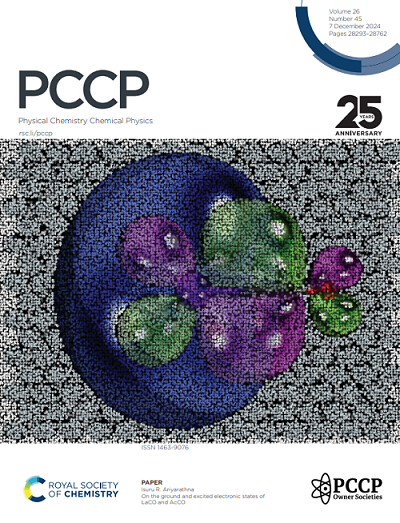Using an aromatic linker to optimize charge-resonance states, photodimerization and reversibility in covalent anthracene dimers
IF 2.9
3区 化学
Q3 CHEMISTRY, PHYSICAL
引用次数: 0
Abstract
The intramolecular [4+4] photodimerization of anthracene chromophores in covalent assemblies can be harnessed to create negative photochromic systems. This paper reports the characterization of the photophysical and photochemical properties of a new class of asymmetric phenyl-linked bis(anthracene) photochromes and compares their behavior with that of a previously studied symmetric ethylene-linked analog. Steady-state and femtosecond time-resolved spectroscopic experiments show that both types of bis(anthracenes) support a neutral bright state along with a lower-energy charge resonance state. After photoexcitation, both states relax on sub-10 ps timescales, but with significantly different photodimerization quantum yields: 0.83 using 532 nm excitation of the charge-resonance state versus 0.46 for 400 nm excitation of the neutral bright state. The phenyl-linked bis(anthracene) derivatives exhibit superior thermal stability and reversibility due to a lower activation energy for dimer dissociation (94 kJ/mol versus 110 kJ/mol). Quantum chemical calculations reveal the structure of the neutral and charge-resonance excited states and can rationalize the higher photodimerization quantum yield of the latter. The phenyl linker enforces close alignment of the anthracene moieties, shifting the charge resonance state to lower energy and extending the wavelength range of the photochrome while also raising the energy of the photodimer ground state to enhance the backward reaction rate. The phenyl-linked bis(anthracenes) provide a promising system to harness the [4+4] photodimerization reaction with high quantum yield, room temperature reversibility, and cyclability.求助全文
约1分钟内获得全文
求助全文
来源期刊

Physical Chemistry Chemical Physics
化学-物理:原子、分子和化学物理
CiteScore
5.50
自引率
9.10%
发文量
2675
审稿时长
2.0 months
期刊介绍:
Physical Chemistry Chemical Physics (PCCP) is an international journal co-owned by 19 physical chemistry and physics societies from around the world. This journal publishes original, cutting-edge research in physical chemistry, chemical physics and biophysical chemistry. To be suitable for publication in PCCP, articles must include significant innovation and/or insight into physical chemistry; this is the most important criterion that reviewers and Editors will judge against when evaluating submissions.
The journal has a broad scope and welcomes contributions spanning experiment, theory, computation and data science. Topical coverage includes spectroscopy, dynamics, kinetics, statistical mechanics, thermodynamics, electrochemistry, catalysis, surface science, quantum mechanics, quantum computing and machine learning. Interdisciplinary research areas such as polymers and soft matter, materials, nanoscience, energy, surfaces/interfaces, and biophysical chemistry are welcomed if they demonstrate significant innovation and/or insight into physical chemistry. Joined experimental/theoretical studies are particularly appreciated when complementary and based on up-to-date approaches.
 求助内容:
求助内容: 应助结果提醒方式:
应助结果提醒方式:


